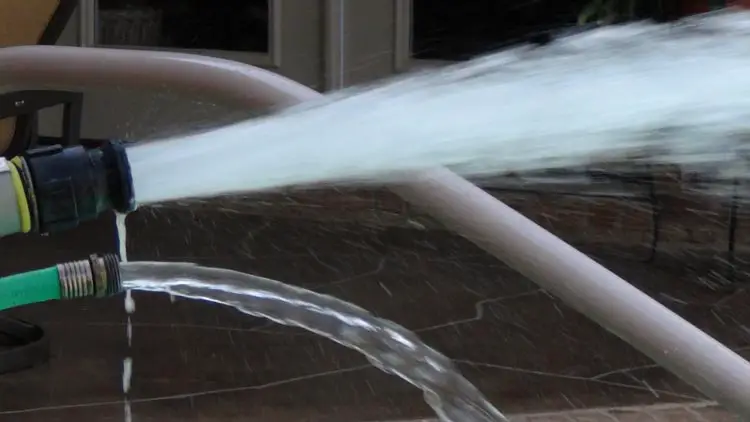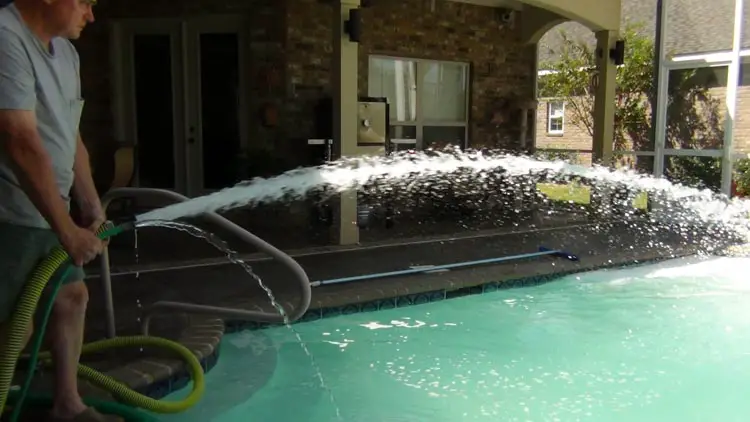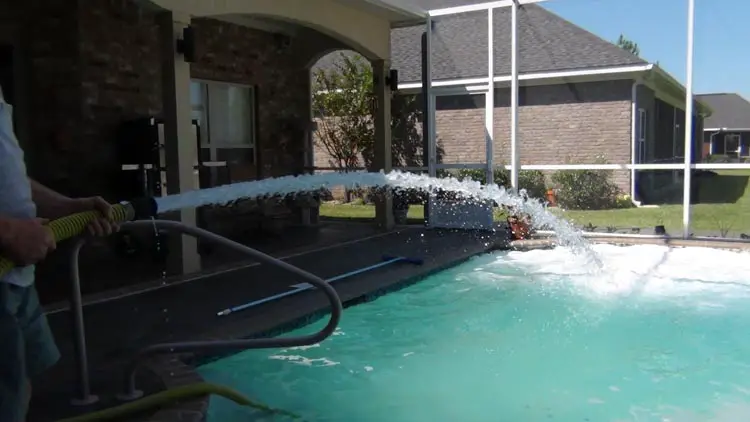WHY YOU SHOULD DRILL WITH A MUD PUMP IF YOU CAN
When drilling with two hoses, the weakest part of our human powered “drilling rig” is not the human motor or even the plastic drill bit. It is the lack of sufficient water flow. Water flow is the most critical part of drilling a well from a DIY standpoint.
If you have washed down a few wells using two hoses for water flow you probably have thought you could have gone much deeper if the pipe had not begun to stick. In the area I live, frequently down around the 30 foot level, drilling actually gets easier. The problem is when I have to stop to add a piece of PVC, sand down in the hole collapses on the pipe and the pipe gets stuck. With two hoses I dont’ have enough water flow to wash the hole out enough to get the pipe free.
A 30 foot well is plenty for many folks. A little deeper would frequently be better. To do that, you need more drilling fluid (water) flow pushing those cuttings back up to the top of the hole.
If you could fanangle it, ten hoses would not be too many.
Enter the lowly mud pump. This machine can make a huge difference in your drilling. If you can buy or borrow one to drill with, do it. I’m not so keen on renting them because first time drilling projects tend to not finish on time and by the time you pay four or five days rental on a mud pump, you could have nearly bought one. If you only want to use a mud pump for one well, consider buying one and selling it when you are finished. Better yet, buy a used one and sell it when you are finished.

MUD PUMP
Two hoses put out about eight gallons per minute (GPM). I have a minimal mud pump that pumps about 100 GPM (it is routine for mud pumps to put out 200 to 500 GPM). In the video below I measure a single household hose at 4.25 GPM. Then I measure my mud pump at 107 GPM. That calculates to the mud pump putting out 12.5 times as much water as two hoses. But the advantage of a mud pump does not end there.
A mud pump permits us to set up a re-circulating drilling fluid (water) system and add bentonite to our drilling fluid. Bentonite hardens the sandy walls of our well as we drill. The hardened walls do not collapse when we stop drilling. You usually can take 30 minutes to add a piece of PVC and the drilling pipe will still be free! Several folks have reported stopping for the day and finding the hole still open the next morning. And the advantage does not end there.
Because the sandy hole will stay open on its own, we are no longer restricted to open drill bits. As you know, we have been using drill bits that are simply pieces of PVC or metal pipe with teeth cut in the edges. This is so when we drill down to depth, we can insert a smaller well screen pipe down through our drill pipe. This technique gets the well screen down there before the hole can collapse.
Obviously it would be useful to have a cutting edge or edges in the middle of the drill bit. With a mud pump system we can use these more efficient drill bits. We can drill the hole, remove the drillpipe, and then insert the well screen because the hole will stay open long enough to do it.
To demonstrate the dramatic difference between the GPM output of a mud pump vs. two hoses, I have made somewhat of a silly video that appears below. I know it is like racing a bicycle against a Ferrari but take a look anyway if you will.

MUD PUMP vs HOSE


I’ve never held a fire hose but I can only imagine how hard it must be.
This little hose requires a firm grip!

Please check out this video!
 drillyourownwell.com
drillyourownwell.com